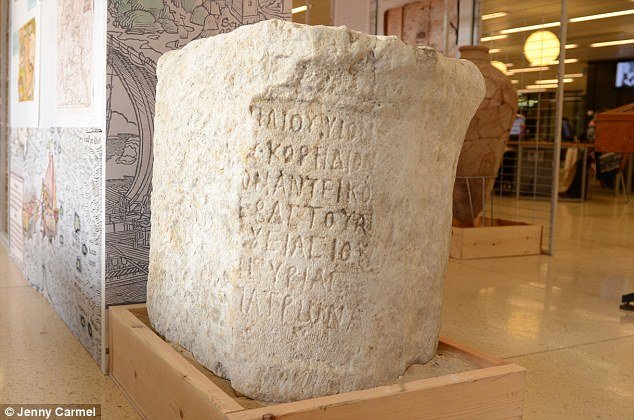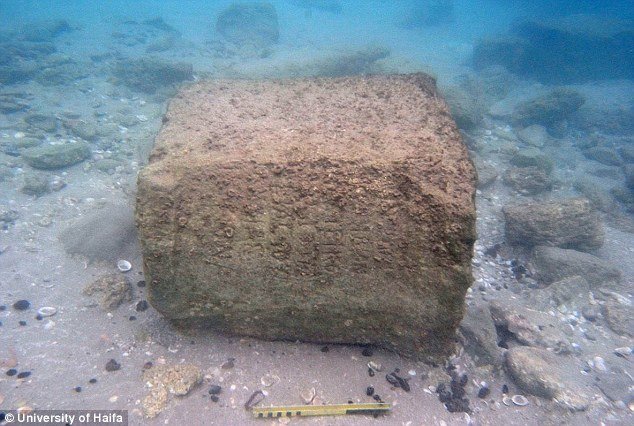
Researchers have revealed for the first time that its inscriptions give the name of the Roman governor who ruled over the biblical state of Judea in the lead up to a failed revolt by the Jews.
Archaeologists say that in addition to revealing the governor's name - Gargilius Antiquus - the tablet features only the second recorded Roman inscription to use 'Judea' for the region.
The slab was first found on the seafloor about 18 miles (30km) off the coast of the city of Haifa and is believed to date back to the 2nd century CE.
This was a bloody period in Jewish history, leading up to the Bar Kokhba revolt, when the people of the province of Judea rebelled against the Romans.

Over the past 70 years, excavations around the site of the biblical city of Dor, south of Haifa, have revealed chunks of pottery as well as the huge rectangular stone, which was later dragged from the waters and moved to the University of Haifa.
The enormous stone is believed to have formed part of a larger sculpture, at 33 inches (85 cm) tall and weighing more than 1300 lbs (600 kg).
Etched carefully into its surface are seven lines of Greek text, the working written language of the region at the time.
Now, a team working to decipher the inscriptions have revealed that it names Gargilius Antiquus as the governor of the biblical region before the events of 131 CE.
They say the mention of Gargilius Antiquus matches previous finds at the site decades earlier, but in which the name of the province had not been preserved.
'For the first time, we can identify with certainty the name of the Roman governor of Judea during the critical period leading up to the Bar Kochba revolt,' said Professor Assaf Yasur-Landau, from the University of Haifa.
'Apart from that, this is only the second time that the name 'Judea' has appeared on an inscription from the Roman period.'
The mention of Judea joins only one other Roman inscription of the title, which also mentions Pontious Pilate - who the bible records as the prefect who sentenced Jesus to death.
After the bloody revolts of the 2nd century, the Romans attempted to stamp out the record of Judea and the uprising, renaming the province as Syria-Palaestina.
'What we have here is an inscription dated to just before Judea ceased to exist as a province under that name,' the researchers add.
'Of the two inscriptions mentioning the name Judea, the one just discovered is later, of course.'
'Because such findings are so rare, it is unlikely that we will find later inscriptions including the name Judea,' they add.



No explanation towards how or why that big stone slab was in the sea? Isn't that more interesting?